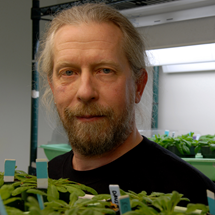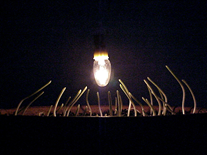By Jamie Fonzino
Correspondent
As a featured Brown Bag Series event at Mayo Concert Hall on Friday, Feb. 28, the College sponsored “Plants — They Whisper, Talk and Even Move,” a presentation that focused on how the study of plants can be viewed both biologically and artistically.

Through a series of photographs, movie clips from “The Lord of the Rings” and time-lapse videography, Roger P. Hangarter, a renowned biology professor at Indiana University, illustrated the idea of “plant blindness,” or the unawareness that people have toward the importance and beauty of plant life.
“We are going to have fun today,” Hangarter said as he started his presentation.
Hangarter described how plants, like most organisms, were living creatures that had the ability to “move, perceive
and respond to stimuli, communicate with each other and communicate to other creatures,” even though they function
through much slower processes.
To illustrate the complex inner workings of vegetation, Hangarter showed several time-lapsed videos of his own
plant observations and examples from his “sLowlife” exhibit, displaying how both gravity and light can elicit movement from different plants.
Hangarter’s videos of sunflowers, pumpkins, Venus flytraps and more flora and fauna showed the dance-like movements
of plants as they opened their leaves, coiled their vines around objects, used their roots to mine for minerals in the earth, followed the sun throughout the day and beckoned to potential pollinators.
“The video clips really accentuated the complexity and beauty of plant life,” freshman communication studies major Casey Facas said. “It really made for an interesting and informative lecture.”
To further augment the aesthetic quality of plants, Hangarter introduced examples from “The Living Canvas,” a new project he collaborated on with different artists, where light was used to imprint clear images on the surface of leaves.

According to Hangarter, light affects the movement of the leaf’s chloroplasts, organelles that give plants their green pigment, so he, along with different artists, were able to draw faces, write words and even produce short films on the surface of leaves.
With Hangarter’s scientific and artistic representation of vegetation in mind, the plants, flowers and leaves lining the College campus will certainly be seen in a different light and will no longer go unnoticed.






